Functional nose surgery (Concha and Bone Operations), Polysomnography (Sleep Test), Painless, No Bleeding Tonsillectomy with Thermal Welding Technology.
Nose aesthetic surgery, also known as “Rhinoplasty” is one of the most common plastic surgery operations. It changes the shape of the nose in terms of aesthetic concerns and also makes the patient breathe better. Rhinoplasty recovery is the final part of the rhinoplasty operation. The longness of that time varies from patient to patient. After your rhinoplasty operation, you are requested to follow some medical instructions given by your surgeon. To quicken the recovery, you should completely carry out these instructions. The instructions are very important to achieve a good result. In three weeks, you will be able to start working again.
Septum deviation or in its other name, nasal bone curvature is a cartilage and bone in your nose. A septum deviation occurs when the thin barricade between your nasal passages is displayed to one side. If a deviated septum is severe, it can block one side of the nose and that can cause less quality breathing.
If your deviated septum is more severe, it may affect your breathing, cause headaches, or lead to infections. Some of the symptoms of septum deviation are listed below:
Dacryocystorhinostomy surgery is a surgical treatment method for the condition called “block tear duck”. A blocked tear duct causes your tears not to drain normally. Anatomic problems, tumor obstructions, and nose traumas are among the causes of blocked tear duct. Most blocked tear duct conditions are correctable but treatment depends on the age of the patient and the cause of the blocked tear duct.
Symptoms of blocked tear duck are varied. Some of them are including:
Endoscopic sinus surgery, also called functional endoscopic sinus surgery is minimally invasive surgery for sinus conditions. Surgeons use nasal endoscopes to relieve your sinus symptoms without making incisions on your nose. These endoscopes are including thin lenses and lights.
If you have a chronic sinus infection and your doctor provides you with endoscopic sinus surgery, you may consider having it. Average endoscopic sinus surgery is about two hours long but that depends on the patient’s condition. Most people go back to work in a week and in two weeks can continue most daily life activities.
Along with snoring, one of the most common sleep disorders is a condition called sleep apnea. During your sleep, it can cause your breath to stop many times. The main reason for that is the muscles in the throat. Sleep apnea decreases your sleep quality and that stops you from enjoying all your daily life activities.
You can understand your situation by consulting a medical expert. Then, he or she can decide which procedure will fit best for you.
Tonsils are a great part of our immune system on the throat. They are like a pair of soldiers fighting against infections at the gate of the body. However, after early childhood, our body can fight against infections without tonsils. In addition, tonsils may cause throat infections, obstructive sleep apnea, and tonsilitis. That’s why tonsillectomies are carried out by surgeons usually in early childhood. But, as a parent, you may concern about how painful can tonsillectomy is.
There is a new technology in tonsillectomy, called “Thermal Welding” that provides painless and bleeding-free surgery. This procedure is also known as “painless tonsillectomy”.
Otology and neurotology are the fields that focus on the treatment of all diseases of the outer, middle, inner ear, and central auditory tract. Babies and children have more risk than adults to have an ear infection. Several ear conditions might need surgery. Some ear diseases and disorders can be itemized as below:
The prominent ear is a common ear disease that the ears stick out from the head more than average. Otoplasty or in another name, cosmetic ear surgery is a procedure in which the surgeon changes the shape, size, and position of the patient’s ears.
If your ears stick out from your head more than average, or if your ears are misshapen after an injury, or as a birth defect, you may consider having an otoplasty. The procedure typically takes two hours. Your surgeon will tell you how long it will take to go back to daily activities after the surgery.
Tympanoplasty is a surgery in which the surgeon treats the ruptured eardrum of the patient. A ruptured eardrum has a hole in its tissue and that hole keeps the eardrum from vibrating. This might cause serious ear problems and can affect your hearing.
Firstly, as a non-surgical treatment, antibiotics and ear drops are suggested by your doctor. If these treatment methods can not heal your ear problem, then tympanoplasty may be considered.
There are different types of tymapanoplasty:
According to your personal health data and condition, your medical expert will decide which one is most suitable for you.
Tonsillectomy is a very common surgical procedure, especially in childhood. In this procedure, the surgeon removes the patient’s tonsils. The main reasons tonsillectomy is done are tonsil infections and sleep apnea.
Adenoidectomy is a surgery in which the surgeon removes your child’s adenoid glands. Infections and allergies cause adenoids enlarged or swollen and as a result of that, your child may have difficulty in breathing.
Ear tube insertion is a surgical procedure in which the surgeon inserts small, hollow cylinders into the patient’s eardrum. Surgeons usually use ear tubes in patients who have middle ear infections that resisted treatment.
Head and neck surgery or “Otolaryngology” in medical terms, is a surgical procedure in which the surgeons focus on the ears, nose, and throat. In this procedure, specialists train medicine and surgery together. Otolaryngologists focus on the diagnosis and treatment of ear, nose, throat, and head and neck disorders.
Some of the disorders that are in the field of head and neck surgery are head and neck cancer, ear infections, nasal obstructions, middle ear infections, voice concerns, salivary gland diseases, facial trauma, airway obstructions, choanal atresia, branchial cleft anomalies, enlarged adenoids, head and neck masses, and lesions.
People who suffer from allergies have also symptoms related to allergies in the ears. Itching in the ears is one of the most common symptoms. Allergic and immune disorders can lead to fluid in the ear which is also a common disorder.
The most known allergic reaction related to the nose is hay fever. There are tiny particles in the air you breathe that are called allergens. Your body reacts to them when they enter through the air. Dust, mites, mold, and pollens can cause nasal allergies.
Throat allergies are very common and some symptoms are pain and swallowing, dry throat, and difficulty breathing.
Laryngology is a medical field that focuses on illnesses and injuries of the larynx or if we say its popular name, voice box. It is a specialty in otolaryngology that focuses ear, nose, and throat. The voice box holds the vocal cords and is located on the front of our neck. The duties of the larynx are swallowing and sound production.
Some diseases that affect your voice box can be lined up as below:
Maxillofacial surgery is a procedure carried out by experienced dental surgeons. Maxillofacial surgery can treat maxillofacial diseases, correct injuries, and correct imperfections in your face, jaw, and mouth.
The main aims o maxillofacial surgery are being performed:
The body parts that a maxillofacial surgeon focuses on are:
When you see your maxillofacial surgeon for the first time, talk to him or her about every detail and symptom you have. They will like to know your medical history, your current condition, and more.
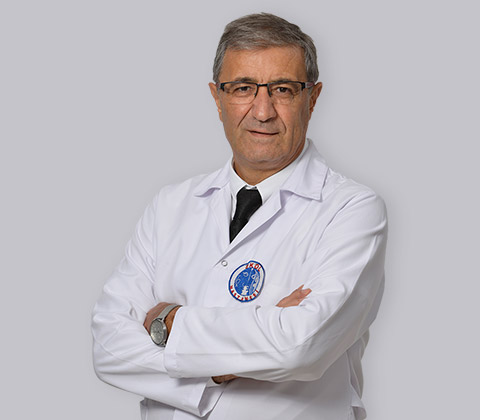 In 1980, he completed his medical studies at the University of Hacettepe. He did his training at the ENT Medical Training Centre of Ankara Numune Education and Research Hospital where he worked as a clinical assistant between 2000 and 2012. He became a lecturer in 2000 and a professor in 2011. Professor Adnan Ünal was an observer at the Methodist Hospital in Houston in 1995. He participated in Cocle Implantation in Switzerland and Belgium in 2009. He has published over 150 articles in Germany and about 35 articles in other countries. Professor Dr. Adnan Ünal speaks English. He is specialized in Head and Neck cancer surgery, thyroid surgery, ENT and cochlear implant surgery, endoscopic sinus surgery, thermo-welding with adenoid and tonsil surgery, voice disorders treatment, aesthetic nose in surgery, and snoring surgery. Prof. Dr. Adnan Ünal is married and has 2 children.
In 1980, he completed his medical studies at the University of Hacettepe. He did his training at the ENT Medical Training Centre of Ankara Numune Education and Research Hospital where he worked as a clinical assistant between 2000 and 2012. He became a lecturer in 2000 and a professor in 2011. Professor Adnan Ünal was an observer at the Methodist Hospital in Houston in 1995. He participated in Cocle Implantation in Switzerland and Belgium in 2009. He has published over 150 articles in Germany and about 35 articles in other countries. Professor Dr. Adnan Ünal speaks English. He is specialized in Head and Neck cancer surgery, thyroid surgery, ENT and cochlear implant surgery, endoscopic sinus surgery, thermo-welding with adenoid and tonsil surgery, voice disorders treatment, aesthetic nose in surgery, and snoring surgery. Prof. Dr. Adnan Ünal is married and has 2 children.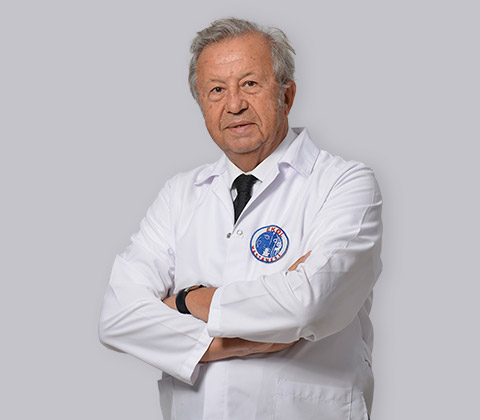 Graduated from Hacettepe Medical Faculty in 1969, Dr. İnal specialized in ENT in Ankara Medical Faculty between 1970 -1973. After his military service, he worked intensely on Head and Neck Cancers in Ankara Oncology Hospital for nine years. In 1984, he continued his career as a lecturer at Gazi University Faculty of Medicine, Department of ENT and then as a Faculty Member working on academic studies for 30 years. He was the Head of the Department of this clinic for 9 years. During that period, he had been in Japan, England, France, the Netherlands and the United States for different times and worked in cancer treatment centres. Throughout the same period, he made around 160 domestic and 25 international broadcasts. He has been the chairman and speaker of numerous sessions in national congresses. 350 internal citations and readings were made to those internal and external broadcasts. Today, he is a member of the Turkish ENT Association and ENT and Head and Neck Surgery Associations. Professor Dr. Erdogan İnal is married and has 2 children. He is fluent in English.
Domain Knowledge: Ear, nose, and throat diseases, especially in Tonsil and Adenoid diseases; Children Ear, nose, throat diseases & surgeries; Intranasal surgery; Septum surgery; Nasal turbinate surgery; Reduction of the turbinate by radiofrequency; Radiofrequency applications for allergic flu; Sinus tumours surgery; Approach to nasal area tumours; Snoring treatment with radiofrequency applications and soft palate surgery; Intraoral tongue and jaw tumours surgical approaches; Surgical and laser treatment of larynx (larynx) diseases vocal cord polyps; All kinds of surgeries regarding laryngeal cancers, partial or full laryngeal operations, chemotherapy radiotherapy and combined use of surgery separately or complementary to each other in the treatment of throat cancers; Approach to tumours on the neck area, surgical radiotherapy, and chemotherapy applications; Neck area upper oesophagus surgery.
Graduated from Hacettepe Medical Faculty in 1969, Dr. İnal specialized in ENT in Ankara Medical Faculty between 1970 -1973. After his military service, he worked intensely on Head and Neck Cancers in Ankara Oncology Hospital for nine years. In 1984, he continued his career as a lecturer at Gazi University Faculty of Medicine, Department of ENT and then as a Faculty Member working on academic studies for 30 years. He was the Head of the Department of this clinic for 9 years. During that period, he had been in Japan, England, France, the Netherlands and the United States for different times and worked in cancer treatment centres. Throughout the same period, he made around 160 domestic and 25 international broadcasts. He has been the chairman and speaker of numerous sessions in national congresses. 350 internal citations and readings were made to those internal and external broadcasts. Today, he is a member of the Turkish ENT Association and ENT and Head and Neck Surgery Associations. Professor Dr. Erdogan İnal is married and has 2 children. He is fluent in English.
Domain Knowledge: Ear, nose, and throat diseases, especially in Tonsil and Adenoid diseases; Children Ear, nose, throat diseases & surgeries; Intranasal surgery; Septum surgery; Nasal turbinate surgery; Reduction of the turbinate by radiofrequency; Radiofrequency applications for allergic flu; Sinus tumours surgery; Approach to nasal area tumours; Snoring treatment with radiofrequency applications and soft palate surgery; Intraoral tongue and jaw tumours surgical approaches; Surgical and laser treatment of larynx (larynx) diseases vocal cord polyps; All kinds of surgeries regarding laryngeal cancers, partial or full laryngeal operations, chemotherapy radiotherapy and combined use of surgery separately or complementary to each other in the treatment of throat cancers; Approach to tumours on the neck area, surgical radiotherapy, and chemotherapy applications; Neck area upper oesophagus surgery.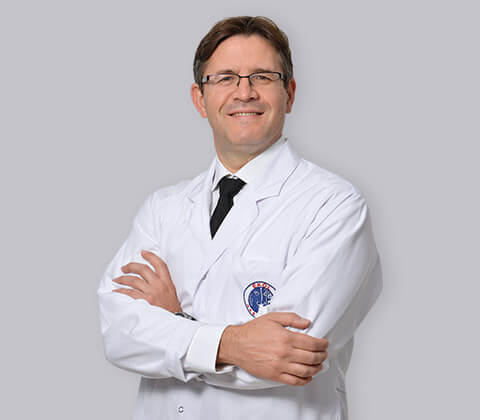 Associate Prof. Çağlar ÇALLI graduated from Izmir Atatürk High School. He is a graduate of Ege University Faculty of Medicine. He was granted Thyroid Surgery and Diseases Scholarship from the Turkish Ear Nose Throat Association in 2009. With this scholarship, he studied Head-neck tumours and thyroid surgery at Ohio State University in the USA. After being granted the Turkish Ear Nose Throat Foundation Scholarship in 2011, he studied facial plastic surgery, snoring surgery, and endoscopic sinus surgery at New York St. Lukes-Roosevelt Hospital in the USA. He became an Associate Professor in 2012. He has conducted oral presentations abroad, and published book chapters and more than 80 articles in international and national journals. Associate Professor Dr. Çağlar ÇALLI’s surgical research interests include Head-Neck tumours, Goiter and Thyroid surgery, Rhinoplasty and Endoscopic sinus surgery, ear microsurgery, and otosclerosis operations.
Associate Prof. Çağlar ÇALLI graduated from Izmir Atatürk High School. He is a graduate of Ege University Faculty of Medicine. He was granted Thyroid Surgery and Diseases Scholarship from the Turkish Ear Nose Throat Association in 2009. With this scholarship, he studied Head-neck tumours and thyroid surgery at Ohio State University in the USA. After being granted the Turkish Ear Nose Throat Foundation Scholarship in 2011, he studied facial plastic surgery, snoring surgery, and endoscopic sinus surgery at New York St. Lukes-Roosevelt Hospital in the USA. He became an Associate Professor in 2012. He has conducted oral presentations abroad, and published book chapters and more than 80 articles in international and national journals. Associate Professor Dr. Çağlar ÇALLI’s surgical research interests include Head-Neck tumours, Goiter and Thyroid surgery, Rhinoplasty and Endoscopic sinus surgery, ear microsurgery, and otosclerosis operations.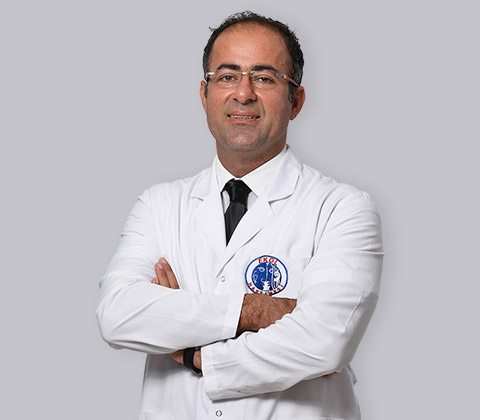 He graduated from Hacettepe University Faculty of Medicine (English). He worked at Ege University Faculty of Medicine – Department of ENT Inner Ear & Balance Disorders for 5 years. Ear Microsurgery and Aesthetic Nose Operations are his special areas of interest. He has successful studies in these areas. His areas of interest are also Radio Frequency Non-Bleeding Tonsillectomy and Adenoids, Snoring & Sleep Apnea operations. He is a member of ESRS (European Sleep Research Society), NSS (National Sleep Society), and TUTD (Sleep Society of Turkey). He speaks English and married with two children.
He graduated from Hacettepe University Faculty of Medicine (English). He worked at Ege University Faculty of Medicine – Department of ENT Inner Ear & Balance Disorders for 5 years. Ear Microsurgery and Aesthetic Nose Operations are his special areas of interest. He has successful studies in these areas. His areas of interest are also Radio Frequency Non-Bleeding Tonsillectomy and Adenoids, Snoring & Sleep Apnea operations. He is a member of ESRS (European Sleep Research Society), NSS (National Sleep Society), and TUTD (Sleep Society of Turkey). He speaks English and married with two children.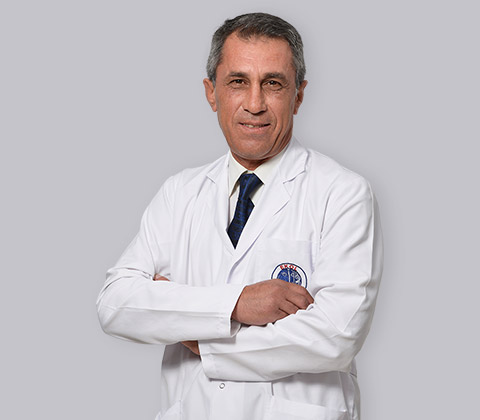 He was born in 1965. He graduated from İzmir Atatürk Highschool in 1982 and from Dokuz Eylül University Faculty of Medicine in 1989. He completed his specialization in İzmir Atatürk Research Hospital in 1996. He is a member of TKBB (Turkish Society of ENT), Turkish Society of Rhinology & Facial Plastic. He had various studies in Turkey and abroad. His special areas of interest are Rhinoplasty, Tonsillectomy and Adenoids, Conchae and Nasal Septum operations, Endoscopic Sinusitis Surgeries, Sleep Apnea surgery, ear surgeries, vocal cord surgeries. He speaks English well and is married with 2 children.
He was born in 1965. He graduated from İzmir Atatürk Highschool in 1982 and from Dokuz Eylül University Faculty of Medicine in 1989. He completed his specialization in İzmir Atatürk Research Hospital in 1996. He is a member of TKBB (Turkish Society of ENT), Turkish Society of Rhinology & Facial Plastic. He had various studies in Turkey and abroad. His special areas of interest are Rhinoplasty, Tonsillectomy and Adenoids, Conchae and Nasal Septum operations, Endoscopic Sinusitis Surgeries, Sleep Apnea surgery, ear surgeries, vocal cord surgeries. He speaks English well and is married with 2 children.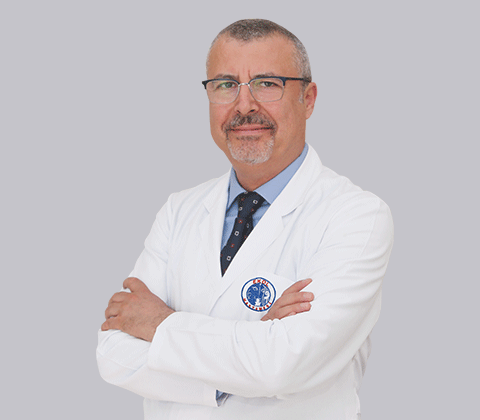 He was born in 1969. He graduated from Ege University Faculty of Medicine in 1987 and completed his specialization in Trakya University Faculty of Medicine, Department of ENT. He is an active member of TKBB (Turkish Society of ENT) and Society of Facial Plastics. His areas of interest are adenoid & tonsil surgeries, conchae and nasal septum surgeries, rhinoplasty, velum, sleep apnea & snore surgery. Dr. Ayhan Yıldırım is married with 2 children.
He was born in 1969. He graduated from Ege University Faculty of Medicine in 1987 and completed his specialization in Trakya University Faculty of Medicine, Department of ENT. He is an active member of TKBB (Turkish Society of ENT) and Society of Facial Plastics. His areas of interest are adenoid & tonsil surgeries, conchae and nasal septum surgeries, rhinoplasty, velum, sleep apnea & snore surgery. Dr. Ayhan Yıldırım is married with 2 children.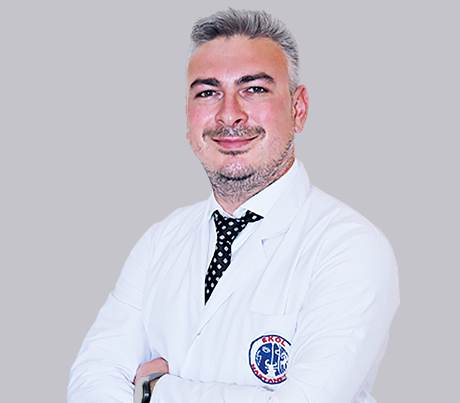 He graduated from Ankara University Faculty of Medicine in 2012. Between 2013-2019, he completed his ENT specialization at Izmir Ege University Faculty of Medicine.
He is a member of the Turkish Medical Association. Oral presentations at international and national meetings, and articles published in domestic and foreign journals. His articles have been cited nearly 100 times.
Fluent in English, Opr. Dr. Baha Sezgin is married and has one child.
Areas of interest; Nose Aesthetic Surgery Tonsil and Adenoid Surgery Nasal Bone Surgery Without Using Tampons (Septum Deviation) Nose Concha (Concha) Surgery Swallowing Disorders Surgery (Diagnosis and Treatment) Head and Neck Tumor Surgery Chronic Middle Ear Inflammation (Chronic Otitis Media) Eardrum Surgery Parotid Surgery Salivary Gland Surgery Ear Tube Surgery Endoscopic Sinus Surgery (Sinusitis Surgery) Endoscopic DSR (Occluded Tear Sac and Duct Surgery) Snoring Sleep Apnea Surgery Radiofrequency Surgery Vocal Cord Polyp and Nodule Microsurgery
He graduated from Ankara University Faculty of Medicine in 2012. Between 2013-2019, he completed his ENT specialization at Izmir Ege University Faculty of Medicine.
He is a member of the Turkish Medical Association. Oral presentations at international and national meetings, and articles published in domestic and foreign journals. His articles have been cited nearly 100 times.
Fluent in English, Opr. Dr. Baha Sezgin is married and has one child.
Areas of interest; Nose Aesthetic Surgery Tonsil and Adenoid Surgery Nasal Bone Surgery Without Using Tampons (Septum Deviation) Nose Concha (Concha) Surgery Swallowing Disorders Surgery (Diagnosis and Treatment) Head and Neck Tumor Surgery Chronic Middle Ear Inflammation (Chronic Otitis Media) Eardrum Surgery Parotid Surgery Salivary Gland Surgery Ear Tube Surgery Endoscopic Sinus Surgery (Sinusitis Surgery) Endoscopic DSR (Occluded Tear Sac and Duct Surgery) Snoring Sleep Apnea Surgery Radiofrequency Surgery Vocal Cord Polyp and Nodule Microsurgery In 2013, he graduated from Mersin University Faculty of Medicine. In 2020, he completed his specialization in Ege University Faculty of Medicine, Department of ENT. He is a member of TKBB Association and Facial Plastic Surgery Association. His oral presentations at international and national meetings and articles in local and foreign journals have been published. Married and father of 1 child, Opr. Dr. Murat Samet Ateş is fluent in English.
In 2013, he graduated from Mersin University Faculty of Medicine. In 2020, he completed his specialization in Ege University Faculty of Medicine, Department of ENT. He is a member of TKBB Association and Facial Plastic Surgery Association. His oral presentations at international and national meetings and articles in local and foreign journals have been published. Married and father of 1 child, Opr. Dr. Murat Samet Ateş is fluent in English.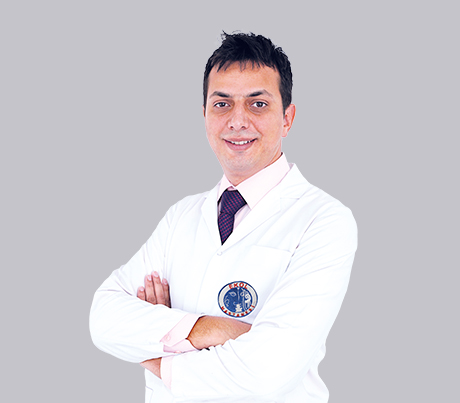 He graduated from Istanbul University Cerrahpaşa Faculty of Medicine in 2015. Between 2016-2020, he completed his ENT specialization at Sakarya University Faculty of Medicine.
He is a member of the Turkish Medical Association. Oral presentations at international and national meetings, and articles published in domestic and foreign journals. His articles have been cited nearly 100 times.
Fluent in English, Opr. Dr. Necati İlhan is married and has one child.
Areas of interest:
• Nose Aesthetic Surgery
• Tonsil and Adenoid Surgery
• Nasal Bone Surgery (Septum Deviation) Without Using Tampons
• Nose Concha (Concha) Surgery
• Swallowing Disorders Surgery (Diagnosis and Treatment)
• Head and Neck Tumor Surgery
• Chronic Middle Ear Inflammation (Chronic Otitis Media)
• Eardrum Surgery
• Parotid Surgery
• Salivary Gland Surgery
• Ear Tube Surgery
• Endoscopic Sinus Surgery (Sinusitis Surgery)
• Endoscopic DSR (Occluded Tear Sac and Duct Surgery)
• Snoring Sleep Apnea Surgeries
• Radiofrequency Surgeries
• Vocal Cord Polyp and Nodule Microsurgery
He graduated from Istanbul University Cerrahpaşa Faculty of Medicine in 2015. Between 2016-2020, he completed his ENT specialization at Sakarya University Faculty of Medicine.
He is a member of the Turkish Medical Association. Oral presentations at international and national meetings, and articles published in domestic and foreign journals. His articles have been cited nearly 100 times.
Fluent in English, Opr. Dr. Necati İlhan is married and has one child.
Areas of interest:
• Nose Aesthetic Surgery
• Tonsil and Adenoid Surgery
• Nasal Bone Surgery (Septum Deviation) Without Using Tampons
• Nose Concha (Concha) Surgery
• Swallowing Disorders Surgery (Diagnosis and Treatment)
• Head and Neck Tumor Surgery
• Chronic Middle Ear Inflammation (Chronic Otitis Media)
• Eardrum Surgery
• Parotid Surgery
• Salivary Gland Surgery
• Ear Tube Surgery
• Endoscopic Sinus Surgery (Sinusitis Surgery)
• Endoscopic DSR (Occluded Tear Sac and Duct Surgery)
• Snoring Sleep Apnea Surgeries
• Radiofrequency Surgeries
• Vocal Cord Polyp and Nodule Microsurgery